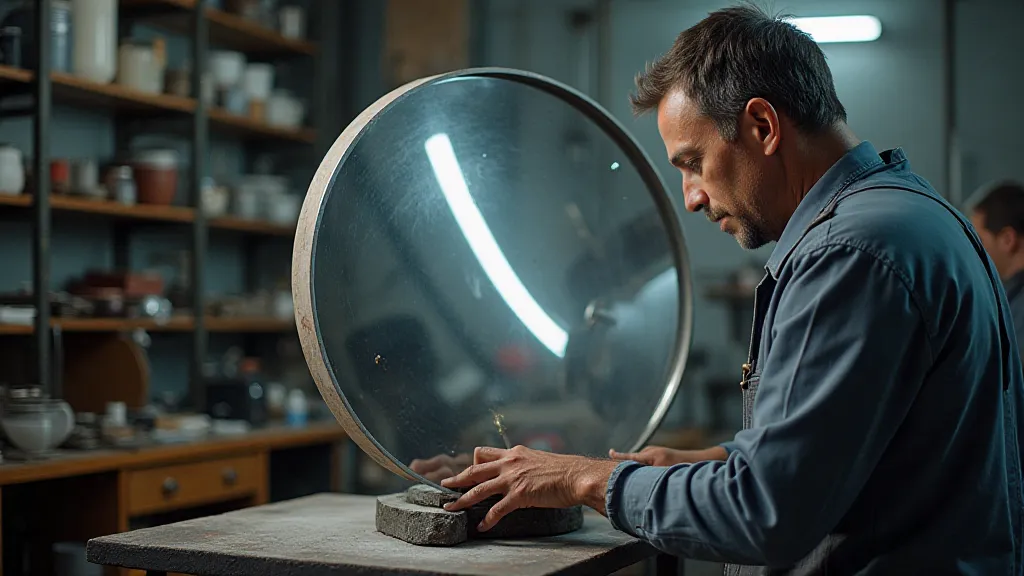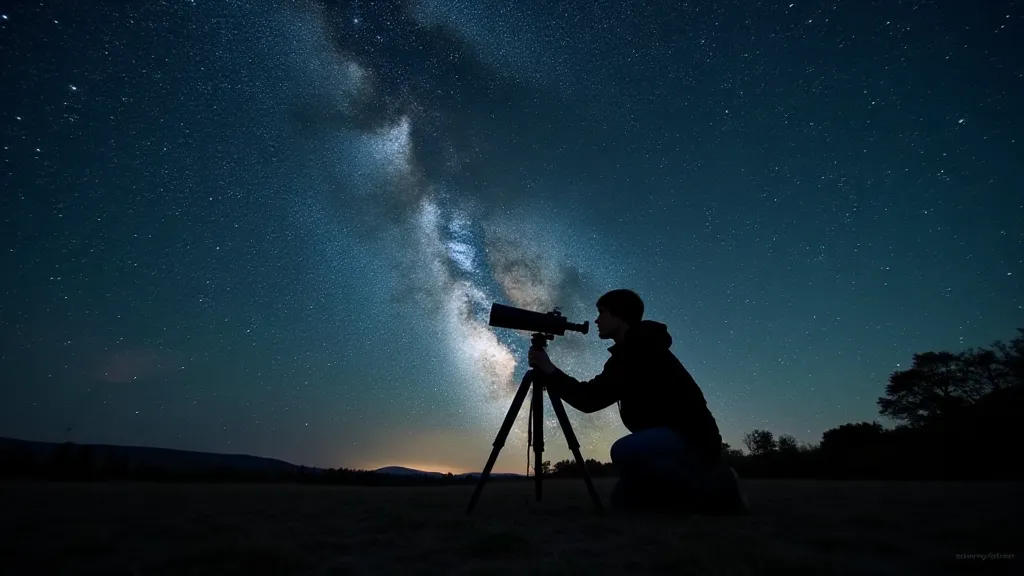Beyond the Naked Eye: A Gradual Ascent to Cosmic Revelation
There’s a peculiar resonance I find in antique accordions. The intricate mechanics, the painstaking craftsmanship, the sheer determination it took to assemble them—it mirrors, in a way, humanity’s enduring quest to see what lies beyond our immediate grasp. Just as an accordion expands the sound of a single breath into a rich, layered melody, a telescope expands our view of the universe, revealing wonders beyond the familiar blue of our sky.
For millennia, our understanding of the cosmos was limited to what we could see with the naked eye. Imagine the early astronomers, huddled in the cold, meticulously charting the movements of the stars, relying solely on their eyesight to discern patterns and predict events. They built calendars, navigated the seas, and wove myths around the celestial dance. It was an act of profound dedication and imagination. Yet, their view, while awe-inspiring, was fundamentally incomplete. The vast majority of the universe remained hidden, shrouded in an obscurity we could only begin to pierce with the invention of the telescope.

The Dawn of Telescopic Vision
The story of the telescope isn't as clear-cut as we might think. While the common narrative points to Galileo Galilei, credit for the invention itself is diffused. Early lens grinders in the Netherlands were likely experimenting with combinations of lenses, and stories abound of accidental discoveries. Hans Lippershey is often cited, having applied for a patent in 1608. But it was Galileo, recognizing the potential of this curious device, who truly revolutionized our understanding of the heavens. He didn't invent the telescope; he perfected it and, more importantly, *used* it to explore.
With a relatively modest telescope, Galileo unveiled a universe teeming with previously unseen detail. He discovered the moons of Jupiter – a profound challenge to the geocentric model that had dominated thinking for centuries. He observed the phases of Venus, providing further evidence supporting the heliocentric view. The craters and mountains on the Moon shattered the idea of a perfect, unchanging celestial sphere. Suddenly, the universe wasn’t just distant points of light; it was a dynamic, textured landscape. These early observations sparked a revolution in scientific thought and forever changed our understanding of our place in the cosmos.
Types of Telescopes: Choosing Your Portal to the Cosmos
The basic principles haven’t changed dramatically since Galileo's time, but telescope design has evolved considerably. Let’s look at some common types and their strengths. Understanding the intricacies of magnification and its role in your observing experience is crucial. For those new to the hobby, exploring the allure of the eyepiece and the science behind it can be a rewarding starting point.
Refractor Telescopes: The Classic Choice
Refractors use lenses to gather and focus light. They're often considered the "classic" telescope design, and for good reason – they can produce sharp, high-contrast images, especially when well-corrected for chromatic aberration (a color fringing effect). The longer the focal length and the larger the aperture (the diameter of the objective lens), the better the image quality and light-gathering ability. Achieving perfectly corrected optics is a significant challenge, and the artistry involved in precise lens grinding often rivals the meticulous detailing found in a master-built accordion.
The craftsmanship involved in creating high-quality refractors is remarkable. While the elegance of a refractor is undeniable, those wanting to maximize their viewing power may find themselves thinking about how mounts shape their cosmic journey, ensuring stability and precise tracking of celestial objects.

Reflector Telescopes: Aperture and Value
Reflector telescopes, on the other hand, use mirrors to gather and focus light. They generally offer a larger aperture for a given price compared to refractors. The Newtonian reflector, with its diagonal mirror directing the image to the eyepiece, is a popular choice for beginners. Dobsonian reflectors are a variant, prized for their simplicity, portability, and enormous aperture, allowing for incredibly detailed views of faint objects. The aperture’s importance is further compounded by the atmospheric turbulence that can degrade the quality of observations; exploring adaptive optics can be helpful in compensating for such effects.
The process of precisely grinding and polishing the primary mirror in a reflector is another example of artisanal skill. Subtle imperfections can significantly impact image quality, making the work of the optician crucial. This meticulous process demands a profound understanding of optics and a steady hand – a challenge comparable to the delicate work involved in restoring a vintage instrument.
Catadioptric Telescopes: Combining the Best of Both Worlds
Catadioptric telescopes, like Schmidt-Cassegrains and Maksutov-Cassegrains, combine lenses and mirrors in a compact design. They offer a long focal length in a relatively short tube, making them convenient for both visual observing and astrophotography. They are a technological hybrid, demanding precision engineering on multiple fronts. This blend of optical elements allows for impressive performance, but also necessitates a higher degree of complexity in their construction and maintenance.
Beyond the Equipment: The Joy of Observing
Ultimately, a telescope is just a tool. The real reward lies in the experience of observing. Even a small, inexpensive telescope can reveal a surprising amount of detail – the rings of Saturn, the cloud bands of Jupiter, the delicate structure of the Orion Nebula. The sense of wonder you feel when you see these objects for the first time is truly unforgettable. It's a profound connection to the vastness of space, a perspective shift that reshapes our understanding of our place in the universe.
Just as restoring an antique accordion reveals the ingenuity and artistry of its creator, observing the night sky through a telescope connects you to a lineage of explorers and dreamers, all striving to understand our place in the universe. This journey fosters a deep appreciation for the dedication and precision required to both build and use these remarkable instruments, from the careful grinding of lenses to the subtle art of mirror polishing. The challenge, and the reward, lies not just in the equipment itself, but in the pursuit of knowledge and the awe-inspiring beauty of the cosmos.
And much like a carefully restored accordion, a well-maintained telescope will bring you years of enjoyment, revealing secrets of the universe one observation at a time. It's an investment in wonder, a gateway to a realm of endless exploration, and a testament to the enduring human spirit of curiosity.

The interplay between these elements contributes to the remarkable versatility of modern telescopes, allowing us to probe deeper into the universe than ever before. Consider the intricate workings of chromatic aberration, a phenomenon that optical designers strive to minimize, or the delicate art of aligning optical components – each a testament to the ongoing quest for ever-clearer views of the cosmos. Understanding these principles can enhance appreciation of the craft of telescope making and deepen one's connection to the vastness of the universe we are exploring.
As technology continues to evolve, so too does our ability to unravel the mysteries of the universe. From advanced imaging techniques to increasingly sophisticated computational models, the pursuit of knowledge knows no bounds. And with each new discovery, we gain a deeper understanding of our place in the grand cosmic tapestry – a testament to the enduring power of human curiosity and ingenuity. The legacy of those early astronomers, huddled under the night sky, continues to inspire generations of explorers and dreamers, each striving to expand the boundaries of our knowledge and our understanding of the universe.





